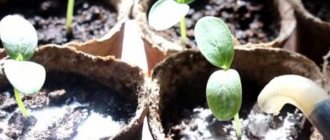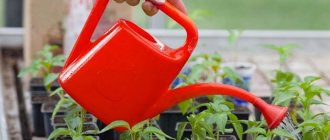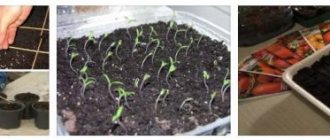Why fertilize seedlings with ash?
Ash is an economically justified and inexpensive means of complex action (fertilizer, insecticide, disinfection, soil deoxidizer), with a completely natural composition. It is easy to obtain by organizing a place for burning branches and grass without financial investments, and at the same time clearing the area of dead wood and branches cut from the garden.
When using ash fertilizers:
- More intense metabolism occurs in the plant.
- Plant growth is activated.
- Biochemical processes are normalized.
- There is no chlorine in the ash - this is good, since many crops are very sensitive to it and may die.
- Repels pests.
- Soil acidity decreases.
Rhododendrons, azaleas, blueberries and some others do not tolerate ash, so before fertilizing, you should become familiar with the characteristics of the crop.
Methods of administration of the supplement
How to feed tomato seedlings with ash at home? You need to follow a number of tips so as not to ruin your vegetables:
- You need to know the acidity of the soil (add it when the pH is above seven).
- It is not recommended to combine ash solutions with lime.
- Phosphate and nitrogen fertilizers are not used together with ash, as well as fresh manure.
- Any fertilizing should be done after the formation of two sheets.
- If you use ash when planting, be sure to mix it with the soil in the hole. Without such a procedure, there is a possibility of burning the rhizome.
- It is better to work with dry products on calm, windless days. Particles are often carried by gusts of wind.
The most dangerous are combinations of ash and mineral fertilizers. If the product is used alone, it cannot do much harm, even if there is an excess of it.
Ash can be added to the soil either dry or in solution.
There are many recipes for watering and sprinkling tomatoes:
- Picking a tomato. Before planting, it is necessary to loosen the soil for normal air passage. Then holes (holes) are made, two tablespoons (or one) of ash are added there. Then it is mixed with soil and watered with water.
- “Dust” or sprinkle tomato leaves with ash. Such pollination can be carried out every ten days. Sprinkling is important not only for crop development, but also for insect control. Sometimes the ashes are mixed with tobacco. It is better to sprinkle in the morning. You need to calculate the proportions - a glass of raw materials for four bushes. The operation can be repeated after fourteen days.
- Ash infusion. The container is filled thirty percent with the combustion product, then filled with boiling water to the brim. The additive should infuse for two days, then it must be strained, and the fertilizer for the roots or for spraying is ready. A faster recipe is fifty grams of ash (half a glass) per ten liters of water. The additive is infused for five hours. Then it is watered at the rate of half a liter per bush.
- Three hundred grams (three glasses) of ashes must be sifted from debris and filled with a bucket of warm water.
Then the entire solution must be boiled for half an hour. Then the liquid product is cooled and filtered. Some gardeners immediately use the additive to spray the leaves, but it is better to dilute it in ten liters of water. In order for the decoction to stick to the plants, you can add fifty grams of crushed laundry soap. It helps very well against harmful insects, snails and slugs. Treatment takes place in the evening in warm weather. - Hood. Quick infusion of the product. A glass of ash on a bucket of hot water. Leave for twenty-four hours.
- In polycarbonate greenhouses, ash mixed with eggshells, sand, and peat is used to feed tomatoes. For greenhouses, it is best to apply this fertilizer in the fall. In some cases, ash is mixed with compost, but many gardeners have an extremely negative attitude towards this method. They express the opinion that the materials do not combine. If there is no specific practice in gardening, it is better not to experiment.
Important! A gardener must remember that properly made fertilizer is the key to success. If you overdo it with the amount of ash, you can harm the vegetables. The recommended proportions must be observed.
Advantages and disadvantages
When using ash fertilizers, to obtain a healthy crop and a good harvest, take into account all the features of using ash.
The benefits include:
- Efficiency - used not only as a top dressing, but also as a protective agent against numerous pests. Serves as a prevention of fungal diseases.
- Natural - fertilizer is obtained by burning natural materials. There are no toxic substances in the composition.
- Economical - the cost is lower than other fertilizers and the storage period is long, independent of temperature or humidity.
Flaws:
- Long wait for results.
- Sharing with nitrogenous types of fertilizers and superphosphate is not allowed.
- Not suitable for all crops.
Pros and cons of use
Among the advantages of this product are:
- Versatility. Ash is used to stimulate plant growth, increase productivity, and control pests and various diseases.
- Organic material. The chemical structure of the fertilizer includes many useful elements on a natural basis.
- A budget option. Fertilizer can be produced without investing financial resources.
- Has a beneficial effect on the soil. Acidity decreases, the earth is filled with useful microelements.
- Ash can be used at various stages of vegetable growth.
- Suitable for many plants.
Do not store ashes outside for a long time. So it loses all its properties.
Disadvantages of using an organic product:
- If a person starts using ashes, he must be patient - the result will not be so quick.
- Ash and some mineral fertilizers (phosphate, nitrogen) do not mix well, and sometimes using them together can be harmful to the soil and vegetables.
- Some plants do not accept ash fertilizer.
Note. Ash that is left outside for a long time completely loses its beneficial properties. It is pointless to use such material.
Ash composition
The ratio of chemicals in the ash directly depends on the type of wood from which crop it was obtained.
Ash consists of:
- calcium carbonate - 17%;
- potassium orthophosphate - 13%;
- magnesium carbonate - 4%;
- sodium orthophosphate - 15%;
- and other elements: sulfur;
- zinc;
- fluorine;
- phosphorus.
Calcium
Calcium is one of the most important components that neutralizes excess soil acidity.
Properties of calcium:
- regulates the ratio of fats and the efficiency of absorption of beneficial microelements from the earth;
- has a great effect on the growth of the root system and helps to build up a large green mass;
- provides reliable protection against fungi and bacterial diseases.
When a plant does not receive enough calcium, the leaves turn yellow, the upper part quickly becomes depleted and dries out.
Phosphorus
Phosphorus plays an important role in the process of photosynthesis and is involved in the conversion of solar energy.
Phosphorus promotes:
- improving plant metabolism;
- regulation of “breathing”;
- acceleration of fruit ripening processes.
A lack of phosphorus in a plant is expressed by the foliage turning brown with the formation of purple spots.
Potassium
Potassium is necessary to participate in the process of photosynthesis.
Effect of potassium:
- provides sufficient moisture to plant tissue;
- improves root nutrition, providing a comfortable environment for seedlings to live.
Proper storage of ash fertilizers
The ashes should be scooped out of the oven with a large scoop and placed in a dish without cracks to avoid the ingress of excess moisture. Gardeners recommend building a fire either on a sheet of iron or in a metal fireproof container. This way it will be as convenient as possible to collect ash. And the best thing is to place a metal mesh there, where you put all the organic matter before setting it on fire. After the end of combustion, large residues are easily separated from fine ash.
You should not delay collecting ashes. The longer it sits in the air, the more nutritional properties it will lose due to exposure to moisture. The collected ash should be kept in an airtight container to prevent it from becoming damp. It is advisable to choose a cool, dark place for long-term storage.
Ash obtained as a result of combustion of the following objects is absolutely not suitable for feeding:
- Plastic, newspapers and magazines, polyethylene, rubber and other household waste. Such ash will not only not help the plant, but will also easily cause the death of the plantings.
- Organic matter collected along major highways and industrial sites. Most likely, such ash will contain increased levels of lead concentration.
- Wooden boards, furniture made of wood or chipboard. The ash will certainly contain remnants of varnish, paint and glue, which could have been used to connect the elements of objects.
Under suitable conditions, ash can be stored from 6 months to several years. The main thing is to prevent moisture from entering, otherwise some of the beneficial properties will be lost. Due to getting wet, potassium will evaporate first.
Ash from fuel briquettes, as a rule, can be used as ordinary ash to deoxidize the soil for planting vegetables. True, you definitely need to look at the composition, since sometimes unscrupulous manufacturers use glue to prevent the product from falling apart. In this case it cannot be used. Ash from briquettes should not be used as fertilizer.
What types of ash are there for feeding?
When burning natural plant residues, the output will be ash of different composition.
Types of ash:
- Wood - has a well-balanced composition of microelements, depending on the type of trees from which it is produced: coniferous trees produce ash rich in phosphorus;
- birch is generous with calcium and phosphorus;
- elm is a hard wood and contains a lot of potassium;
- nutritious ash is obtained by burning young trees.
When the use of ash is prohibited
Using ash at home for seedlings has contraindications and limitations:
- ash is mixed with organic matter that is poorly digestible, for example, humus, manure;
- the seedlings were fed with other compounds when the seedlings did not yet have leaves;
- the ash is wet.
If the ashes are wet, they will have no effect.
Despite the safety and naturalness of the product, its excess is fraught with negative consequences
How to prepare a liquid ash solution for feeding?
Preparation of the solution:
- To remove debris, sift the ash.
- Fill the prepared ash with water (for 5 liters of water - 100 g of ash).
- Stir the resulting solution well and leave it to infuse for 3-4 hours.
- Pre-moisten the soil.
- Pour out the prepared solution.
- Mulch the surface with 1 cm thick soil.
Ash in a liquid solution turns out to be the most effective, as it is quickly absorbed by the soil and reaches the roots, nourishing them.
In what form is ash used as fertilizer?
Ash is a truly unique fertilizer. Without making material costs or investments, we get excellent nutrition with a balanced nutritional composition.
Liquid fertilizer
There are several ways to prepare an infusion of ash for feeding plants:
- 150 g of ash, 10 liters of water. The dry powder is poured with water and infused for 24 hours. It needs to be stirred from time to time. The resulting solution must be filtered.
- 150 g ash, 2 tbsp. boiling water The ash is brewed with boiling water, covered with a lid and left to infuse for a day. Before use, the substance must be diluted with three volumes of water. This composition can be used to feed perennial berry and fruit plantings, annual plants and ornamental flowers.
Dry fertilizer
Dry ash is used in the following cases:
- The land is being prepared for future plantings.
- Fertility needs to be increased.
- Preventative treatment of crops against pests and diseases is planned.
When preparing a bed for planting, dry ash mixed with soil is added to the hole at the rate of 100-200 g per 1 square meter. m plot.
Coarse ash is ideal for pollinating a lawn in autumn or early spring.
Dry ash can replace light liming; it slightly neutralizes the pH level of the soil. The best alkalization of the soil is the ash remaining after the combustion of peat.
Ash fertilizer for pests
Ash is an ideal tool for controlling small invertebrates. Snails and slugs, moving through the ashes, receive powerful irritation of the mucous membrane, resulting in dehydration. This leads to the death of insects. Therefore, gardeners recommend sprinkling the space near the bush with ashes in a circle. But this product should be used only on low-alkaline soil, otherwise there will be excess calcium in the soil, especially after heavy watering or rain.
Dry ash is used to dust plants. For potato tubers, a two-liter container of ash per 40 kg of seed is sufficient. This will help in the fight against stick insects and the Colorado potato beetle; such plantings will be less attractive to them. Young shoots of cabbage and onions are powdered at the rate of 1 tbsp. per square meter.
Ash is an effective means of controlling ants. To do this, just pour a glass of ashes into the place where they accumulate.
Ash can save some cruciferous plants (radish, carrots, green onions, cabbage) from attacks by various flies and white flies. But cabbage will require additional treatment with an ash solution against caterpillars.
To protect berry and fruit crops from various types of pests, you can use the following composition recipe: For each liter of water used, take 100 g of sifted ash. The ash should be poured with water and boiled for 30 minutes, after which the solution should be cooled, settled and diluted with liquid so that the total volume of the substrate is 10 liters. Later you can add 40 grams. laundry soap, grated on a fine grater for better dissolution. Treatment of plantings is carried out either in the evening after sunset, or in cloudy weather in the absence of wind.
Another composition will help in the fight against aphids:
- 1 cup sifted ash,
- bucket of water (10 – 12 l),
- a tablespoon of grated laundry soap,
- 2 tbsp. l with a slide of urea.
All ingredients are mixed together and left for 48 hours, stirring occasionally. The resulting solution is sprayed onto the leaves of the plantings.
Ash from diseases
It is customary to fertilize plants that have been attacked by fungal diseases (powdery and sour mildew, blackleg) with ash. It is effective for radishes, radishes, rutabaga and cabbage. But in addition to ash, experienced gardeners recommend adding tobacco dust in a 1:1 ratio. You can start processing plantings when they have 2 full-fledged leaves.
The substrate made from ash and soap showed good effectiveness:
- Two three-liter jars of sifted ash are filled with 10 liters of hot water and left to infuse for at least 48 hours.
- For greater efficiency, water is replaced with a decoction of tansy, yarrow or tomato tops.
- The finished solution is filtered, after which pre-grated 40 g of laundry soap are added to it.
- The resulting mass is thoroughly mixed and placed in the sprayer.
Treatment by spraying can be carried out every two weeks.
In order to protect berries from gray rot, you can dust strawberries, victoria or strawberries with dry ash at the rate of 2 tbsp. on the bush.
For making compost
Many gardeners don't even realize that ash is an excellent composting agent. It activates the decomposition processes of organic compounds, so it will be useful to sprinkle a small amount of ash on each new layer of compost to increase its nutritional value.
Advice! When preparing a solution from ash, it is often recommended to add vinegar. The fact is that the latter, being an acid, helps calcium, which is slightly soluble in water, transform into a form that is digestible for plants. If you add ash, especially one that has been left in the air, to acidified water, bubbles appear: the slaked lime is converted into calcium acetate, water and carbon dioxide. The resulting calcium compound is better absorbed by plants. When using fresh ash, you may not see bubbles at all, but the longer it is stored, the more violent the reaction will be. Add 9% vinegar, about 200 ml per 10 liters of water and 1 cup of ash.
Feeding seedlings with ash at home
The methods of feeding plants with ash are similar, but differ in proportions and preparation time.
Soaking seeds (infusion)
Ash infusion is used when soaking seeds before planting.
Cooking process:
- pour the ash into settled water in a ratio of 1:1;
- leave the solution to stand for about a day;
- Soak the seeds in the resulting solution for 5-6 hours before sowing.
The main function of soaking is to disinfect seeds and activate growth.
Adding to soil
You can add prepared ash powder directly to the ground.
Adding ash to the soil:
- loosen the soil and make holes for planting;
- for 1 liter of loose soil add 1 tbsp. l. ash;
- mix the mass well;
- Add the mixture to the well.
When adding ash to the soil, it deoxidizes and plant growth is activated.
Ash fertilizer
Another option for feeding plants with ash is preparing ash fertilizer.
Sequence of work:
- sift the ash to clear it of debris;
- fill a container with warm water;
- add ash at the rate of 2 tbsp. l. for 1 liter of water;
- mix the resulting solution;
- water the bushes at the roots.
When watering the seedlings, mix the ash thoroughly; it will not completely dissolve on its own.
After fertilizing, apply the next fertilizer no earlier than 14 days later.
Spraying with solution or decoction
The ash solution is also used as foliar feeding - spraying.
Sequence of preparation and use of the decoction:
- take 3 cups of ash (cleared of debris) and fill it with water;
- cook for 20 minutes over low heat;
- cool and strain;
- Spray the plants with the resulting solution.
Ash acts not only as a top dressing, but also as protection against pests.
Feeding during picking
Preparation of ash for feeding seedlings during picking:
- collect clean (free from pests and diseases) branches and leaves;
- place them on a large metal sheet and build a fire;
- after burning out, wait for the ash to cool completely;
- collect it in a container.
Usage:
- loosen the soil for planting;
- prepare holes for plants;
- add 2 tbsp. l. ash in each hole;
- mix it with the soil in the hole and add water.
Treating leaves with dry powder (dusting)
Carry out the procedure once every two months, at different periods of seedling growth. Ash protects leaves from slugs and snails, removes beetle larvae, prevents further development of blackleg and provides the plant with reliable protection against rot.
Dust early in the morning, when there is still dew on the leaves, so the fertilizer will stay on the leaves for a long time.
Protecting tomatoes from pests using ash
To prevent the appearance of pests on tomatoes, an ash solution is used. It is used once every 2 weeks, pouring the solution under the root of the plantings. This treatment will help improve the protective properties of plants.
To prepare the nutritional mixture you will need:
- 1 glass of ash;
- 10 liters of water.
The ash is poured with warm water and left to infuse in an enamel container for two days. The solution must be stirred at least 2-3 times a day. The resulting mixture is filtered and poured into the sprayer.
Some gardeners prefer a different method of preparation. For this you need to take:
- 300 g of ash,
- 10 liters of water,
- 50 g of laundry or green garden soap.
First, the ash is poured with two liters of water and boiled over low heat for about 30 minutes. After the substrate has cooled, it is filtered and the soap ingredient is added to it. If you use laundry soap, we first recommend grating it on a coarse grater for better dissolution. After this, the resulting concentrate is brought to a volume of 10 liters with water.
The substrate is sprayed onto the plants at the rate of 1.5-2 liters per bush.
These recipes will help against aphids on tomatoes.
To combat caterpillars and slugs, you can sprinkle 10 g of ash around each tomato.
Fertilizing for different crops
Methods for using ash differ for different crops. The growth and productivity of plants depends on the correct proportions and use of ash.
Feeding cucumber seedlings
Cucumbers require a lot of calcium and potassium; fertilize them before the bushes flower.
Use of ash:
- pour 0.5 liters of ash fertilizer under the bush;
- repeat the procedure 10 days after the last feeding;
- Additionally, spray the cucumbers with an ash solution on the leaves.
Feeding tomato and pepper seedlings
Sequencing:
- Pour a solution with ash into the loose soil (2 tbsp solution per 1 sq. m) or add 3 tbsp. l. dry ash into the hole.
- Repeat feeding with ash during the growing season - pour ash under the bush, pour in a small amount of water and loosen the soil.
Fertilizing garden flowers
Lilies, roses, peonies, clematis and gladioli need feeding with ash. Fertilize them when planting them in the ground.
Feeding options:
- During planting, add 5-10 g of ash to the hole under each plant.
- Dig up the soil for planting flowers and scatter the ash.
- To get rid of pests on flowers, you need to water the leaves with an infusion of ash on a windless morning, still with dew.
Scheme and schedule for feeding peppers and tomatoes
To stimulate active fruiting, it is enough to use the ash twice:
- the first application is in early June, during the budding period;
- the second - in mid-summer, when fruiting occurs, to add strength to the plant.
You can fertilize the seedlings 15 days after planting, because during this period the seedlings need phosphorus and calcium for active growth and development.
Ashes provide seedlings with all the substances they need to grow.
Ash collection and storage
The composition of the ash directly depends on what was in the fire. To obtain good quality ash material, it is advisable to use metal barrels with a hood, in which case complete combustion of the material occurs. But in the household, ash from a fire is also suitable.
To obtain ash:
- make a fire, adding the necessary crops to it depending on what type of ash you want (wood, straw or peat);
- when the fire burns out, let it cool;
- sift the ash, and as a result you will get a nutritious fertilizer rich in microelements.
Store the ash in a dry place in a closed container.
When preparing ash, infected and diseased plants and household waste (plastic, polyethylene, painted boards) should not be thrown into the fire.
Types of ash and the content of basic elements in it
The composition of ash for feeding tomatoes can be different, this was mentioned above. It mainly depends on what organic components were burned. Based on the table below, you can choose the most suitable ash composition in each specific case or prepare a mixture of its different types. For example, to obtain a substance significantly enriched with calcium, it is recommended to burn buckwheat straw or sunflower stems, rather than ordinary firewood.
| Type of ash | Calcium,% | Potassium, % | Phosphorus, % |
| Coniferous | 35 | 6 | 2,5 |
| Deciduous | 30 | 10 | 3,5 |
| Derived from cereal straw | 4-8 | 10-20 | 4-8 |
| Slantsevaya | 65-80 | 1-1,5 | 0,5-1,5 |
| Peat | 20 | 1 | 1,2 |
| Derived from buckwheat straw | 18,5 | 30-35 | 2,5 |
| Derived from sunflower stems | 18-19 | 36-40 | 2,5 |
Useful tips
When feeding seedlings with ash, you should adhere to the following tips:
- Ash is well absorbed by the soil, so before planting seedlings, pour it into loosened beds.
- To prevent the ash from being blown away by the wind, cover it with mulch.
- To combat aphids and powdery mildew, use ash infusion.
- Choose calm days for work.
- Regular fertilization with ash helps get rid of wireworms.
- Spraying with an ash solution makes the leaf blades hard and unattractive to insect pests.
- Ash is used for preventive purposes against fungal diseases.
Fertilizing with ash is not a mandatory procedure for seedlings, but it helps get rid of pests and accelerate the growth and maturation of the plant. With its help, anyone can create their own universal fertilizer, which will help them get a rich and healthy harvest.
Using fertilizer when transplanting seedlings
When planting tomatoes in a greenhouse or open ground, the use of sifted ash or ash fertilizer is mandatory. If the soils are acidic or heavy, it is recommended to add at least three tablespoons of ash per bush before replanting. The ash is pre-mixed with the ground.
Do not allow direct contact of plant roots with large amounts of ash that have not been thoroughly mixed with the soil - this can lead to burns of the roots and death or disease of the plant.
Before planting tomatoes, in the spring, you can additionally add ash to the ground when digging - this will lighten the soil and saturate it with microelements. You should not overuse it, since the ash will be added during replanting and later used for watering, but you can add a half-liter jar per square meter of soil.
Ash must be sifted before adding to the soil or future solution . This will prevent heavy insoluble compounds from entering the ground.











